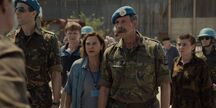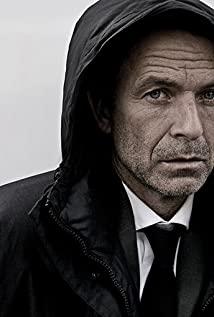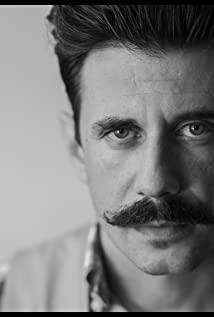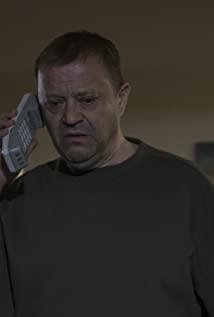Unexpectedly, it was about the Srebrenica Massacre, which I am most familiar with in contemporary western history. The most personal trip in 2012 took me there. I saw the survivors of the massacre, went to the ruins of the camp of the Dutch peacekeeping force outside the small city (exactly the same as the main scene in the movie), and saw those who don’t know at the end of the film. The joyous child of what's happening at the feet. As the best female director in Bosnia and Herzegovina, Yasmila focused on restoring history this time, instead of trying to establish a female dilemma. After all, it was cruel to write poetry after Auschwitz, and it was also cruel to write stories for those who came after Srebrenica.
In other words, both "On the Journey of Love" and "Gerbavica" are both beautiful and melancholic scar movies in Bosnia and Herzegovina, and "Ada, what's wrong?" ", the source of the scars is finally revealed directly.
The next part can be regarded as a "travel", which is the part about Srebrenica in my 20,000-character "Bosnia and Herzegovina, the Land of Snow and Honey"
Srebrenica, I think I will kill him!
After the war, part of the sniper area that was controlled by the "people on the hills" of Sarajevo was still divided into the autonomous Serb Republic, so there is also a rare "East Sarajevo" in this city. Of course, this is not something Berlin or Nicosia in the north and south. There are no walls or outposts. Residents can move around freely. You can almost simply call it the "East City of Sarajevo". It's just that, like some kind of historical problem, if you want to take the bus to the Serbian Republic and most of the cities in Serbia, you have to go to the "Dongcheng District" with a short distance.
From the Lukavica Passenger Terminal here, I took the 4 and a half hour morning bus to Srebrenica, the wounded city in the eastern part of the country where nearly 10,000 innocent souls were buried. Along the way, golden pine forests, cold and clear springs, meadow sheep, and wooden houses smoking smoke make it difficult to associate these sceneries with burning villages, screaming girls, and heads in other places. "The beautiful village is still beautiful even if it is burned." In the movie "Splendid River and Mountain Fire", the Serb soldier who avenged his mother's death lit the village of the best Mu friend in his childhood; "He just Holding the trumpet like a butcher, the butcher twisted his neck when he was killing the goose." In the novel "How a Soldier Fixes a Gramophone", the child looked at the uninvited guest who broke into the house in horror. Film and television literature did not exaggerate the "Civil War landscape" at all. The killings in these villages are far from being comparable to the massacres that occurred in Srebrenica, a safe zone designated by the United Nations during the war.
The 11-day purge that took place from July 11 to 22, 1995, was the most serious massacre crime in Europe after World War II.
The Potocari Cemetery, a memorial to the massacre, is 6 kilometers away from the city center. The visitors who arrived at the same time as me, except for a group of American students who went to Serbia to exchange and study international politics, had only one SUV with a Swiss license plate. A young and old woman walked out of the car. The woman was wearing a headscarf. It was estimated that she was a survivor who had survived the disaster and emigrated abroad. She has a similar tragic story to those of Bosnian Muslim refugee families that can be seen in Sweden and the United States. The large stone stele at the entrance is engraved with "8372..." several large red letters. The ellipsis indicates that 8372 is only the number of victims who are "known and whose names can be compared", and there is a considerable amount of skeletal DNA waiting to be checked. It is estimated that many of them will never find such a person. The front and back of the other white obelisk is written with an epitaph in Bosnian and English, “We pray to the Almighty God, hope that grievances will be replaced by hope, and revenge will become justice. May the tears of our mothers become prayers, and the violence will continue. Stay away from Srebrenica and its people."
8372...White obelisk tombstones stand in rows with dignity among the green grass. Bright red flowers protrude from the mound. A large, almost oval, flat marble slab is engraved with 8372... The names and dates of birth of the victims are arranged by surname. I pay special attention to a few of them who were born in 1980 and my age. They must have shouted the rock of guns and roses in junior high school, chasing AC Milan’s 58 unbeaten league matches, and they are becoming more and more beautiful girls in the school. There is a physical impulse, but their growth has never stopped at the age of 15.
American college students gathered in a circle in front of the epitaph, quietly and depressively listening to a commentator telling a story not long ago. A girl took out her mobile phone and tried to record, but was quickly stopped by the commentator. "I have to try my best to prevent what I said being posted on YouTube. Although this is all true, there are still extreme democrats in this country. Clan, Mu, or Croat," explained the survivor of the massacre, who asked not to be named.
Then, he took us to the workshop opposite the cemetery. Before the start of the massacre, it was once a camp for 400 Dutch officers and soldiers. It was a guarantee for the implementation of the security zone of the United Nations peacekeeping force. What remains in the workshop today are bare walls, as well as the relics and biographical details of some of the victims. In a glass window in front of him, there is a piece of prayer that cannot be read clearly. The accompanying life story is about Dzevad, who was born in October 1977: the war is approaching, and the family is cuddling together. After Srebrenica became a United Nations safe zone, life became easier. Dzevad wore a pair of ragged shoes that were almost bottomed out to school every day, but he still ranked first in his grades. On July 11, 1995, he was taken to the forest and said goodbye to his mother: "Is it time to separate? I wish you would leave me when you were a child. Then you might have less pain for a few years." Mom and sister have been looking forward to it. At the age of 17, he was able to go home one day until his DNA was tested in January 2004.
History has proved that all laws, including international law, are bullshit in the face of red-eyed lunatics. On July 11 of that year, the Serbian army who had besieged Srebrenica for more than a year, ignored the status of the United Nations safe zone, and drove into the city. More than 20,000 Muslim refugees had to hide in the Netherlands for peacekeeping. The camp of the troops. From the surviving narrator, we learned that there is no Hollywood story where the brave can turn the tide, even a little Dutch version of the "Schindler List" story does not exist. "In view of their own soldiers and some Frenchmen being taken hostage, the Dutch side had to call NATO headquarters to abandon the air strike plan and exchange 5,000 Muslims for 14 Dutch hostages. In the army colonel Daum Kalemans and Mladic During the negotiations, the top commander of the Dutch garrison was always afraid to anger the tough Serbian commander-in-chief. Later, military trucks and buses drove up to take away the Muslims hiding in the base, while women and children walked aside. Adult men walked the other side of the road of no return. The Dutch soon escaped, celebrated victory in Croatia and then was awarded a hero in Amsterdam. Of course, maybe they didn't know what happened later."
At dusk, I went to visit the main city of Srebrenica. The roads were clean, the houses were tidy, the mosque and the Orthodox Church lived next to each other, and the children shouted and chased a ball on the playground. Today, the entire administrative region has a population of 12,000, most of whom are Serbs. In the past, the Muslim owners had real estate certificates that were re-approved by the law, but not many people returned to their hometowns. As for the families of survivors who fled that year, almost all of them were refugees and stayed in Sweden, Switzerland and North America forever.
Like writing a diary, I used Weibo to detail what I saw and heard that day. Someone replied, "Unfortunately how many Chinese people have heard of or cared about this tragedy today? Is the distant Bosnia and Herzegovina related to us? "In fact, there is no need to belittle oneself, the Balkans has always been used as an unbearable metaphor, but has been excluded from the scope of European civilization. The young Spanish man in the Sarajevo Inn heard that I had gone to a place far away and asked: "Is it beautiful? Tell me the name again." The French had heard of the massacre, but they only said: "That period of history is quite good. Stupid.” The current media is so developed, which means that people have the freedom to selectively absorb. The name Srebrenica does not belong to most tourists.
Next to the largest Catholic church in Sarajevo, there is a permanent Holocaust memorial exhibition. At the entrance is a horror video that was repeatedly broadcast on the Bosnia and Herzegovina TV station and around the world 9 years ago. The announcer reminded: "Now a certain mother will see her son, and a certain sister will see her brother", then 6 The Muslim youths were rushed to a clearing one by one, and the soldiers of the Serbian Scorpion Unit pulled the trigger from behind. The largest space is reserved for a photographer named TarkSamaral. I once saw some unsigned black and white images, broken dolls, and a section of evidence on a plastic bag in a hut in the Srebrenica Cemetery. The barbed wire, the white gloves holding the body in the tomb...These pictures, either ideographic or realistic, were all taken a few years after the massacre was exposed. There are also graffiti on the walls that record the neighbourhood’s opposition to relatives and friends, "I am your best friend, I will kill you for no reason"; "Killing is my business, this is a good thing"; "United Nations, United A fart (UN, UnitiedNothing)"...
I had a dinner appointment with AhmedParic, who I met on the couch surfing. He went to the appointment with his girlfriend Esma, who was born and raised in Sarajevo. The bank clerk’s personal page read, “Escape from Srebrenica and live, willing to share the memories of that.” Since I was never the kind of journalist who dared to throw out cruel and embarrassing questions, I also learned from travel. , Bosnia and Herzegovina’s recent performance and other "universal topics" babbled, until after a cup of tea, Ahmed directly said, "Then I will talk about Srebrenica."
"It was also on July 11 that the Paric family, a native of Srebrenica, began to flee, and was forcibly separated by the Serbian army at the Dutch peacekeeping station in Potocsa. There was not much struggle. Dad and brother were pulled into a truck. Even though I am quite tall, I was still the shortest in the class at the age of 14 due to my late development. So I drove to Tuzla with my mother and sister. Most of my classmates stayed forever. No more. From Tuzla to Sarajevo after the war, we have been waiting for news from our loved ones. In 2008, the DNA of the bones of our father was tested. Last year, our brother was also confirmed to have been killed."
After a long silence, I bravely asked: "There are always Serb colleagues and even superiors in the bank? How do you get along?"
"Yes, but I will never be able to make friends with them. Work belongs to work. I will not participate in any team building and festival activities beyond 8 hours." Ahmed described the working environment of survivors like them.
"Later, did you go back to your hometown?"
"We still have a set of vacant rooms there. Mother went back. Since most of the local Serb police officers who carried out the death sentence at the time knew each other, she also recognized one of the murderers on the street. That guy was so easy to get along with each other. Mom said hello, as if nothing had happened. Mom was scared to silence. If I ran into him and confirmed that he was involved in the murder of my father and brother, I think I would kill him."
I gave them a pair of chopsticks. Ahmed once went to a Chinese restaurant with his girlfriend, "I can even use chopsticks to hold peas." When sorting out, he opened his trousers, and there were four Chinese characters pierced on the top of his right ankle. ——Confidence destiny, tattooed at Tuzla while waiting for news from his father and brother. Ahmed certainly knows the meaning of these four words, and I also hope that this pair of chopsticks can replace the knife of revenge.
A few months after returning to China, Ahmed sent me a message from Facebook: Esma is no longer my girlfriend. From today, she has become my wife. Welcome to Sarajevo again. "
View more about Quo Vadis, Aida? reviews











